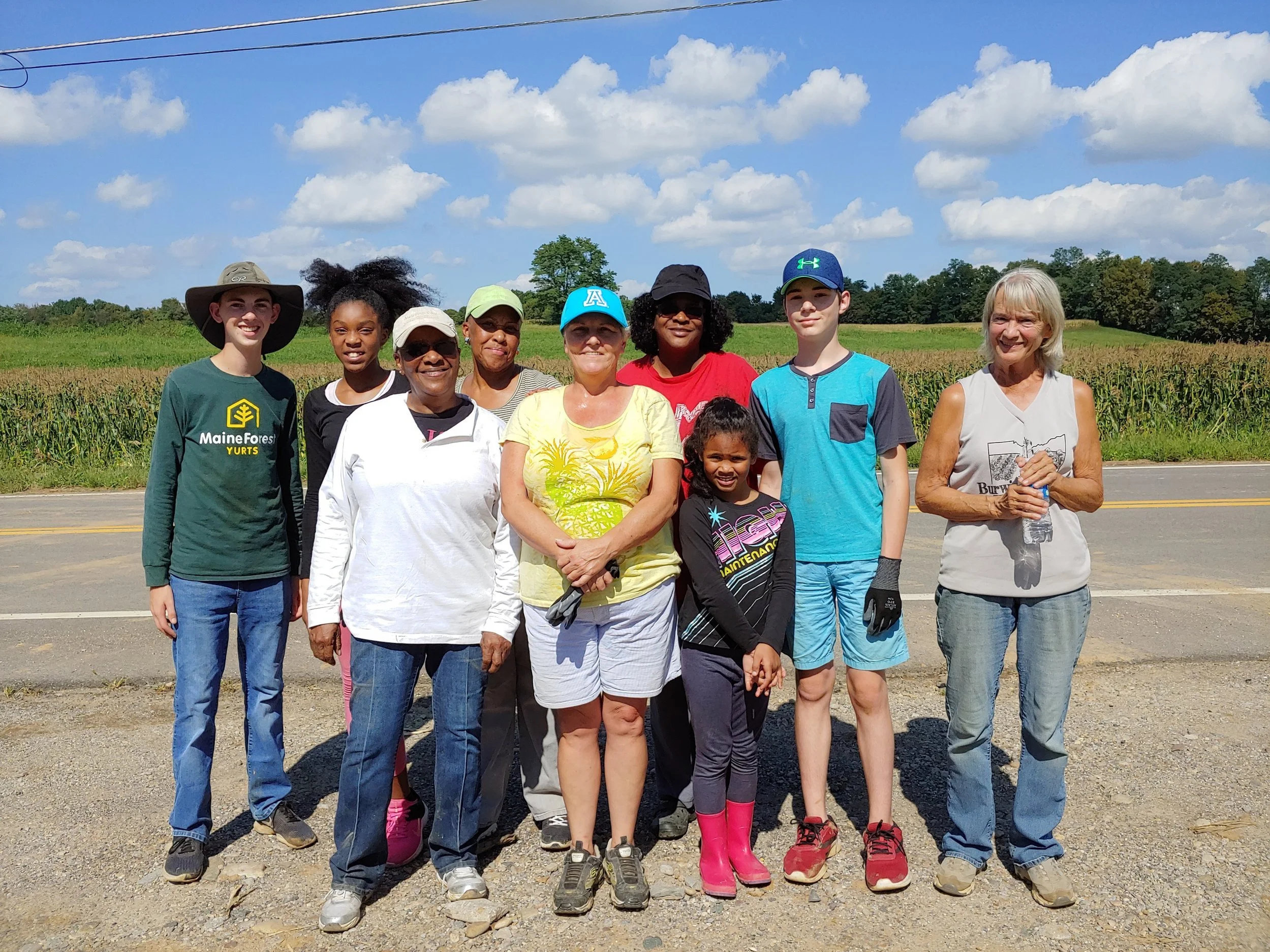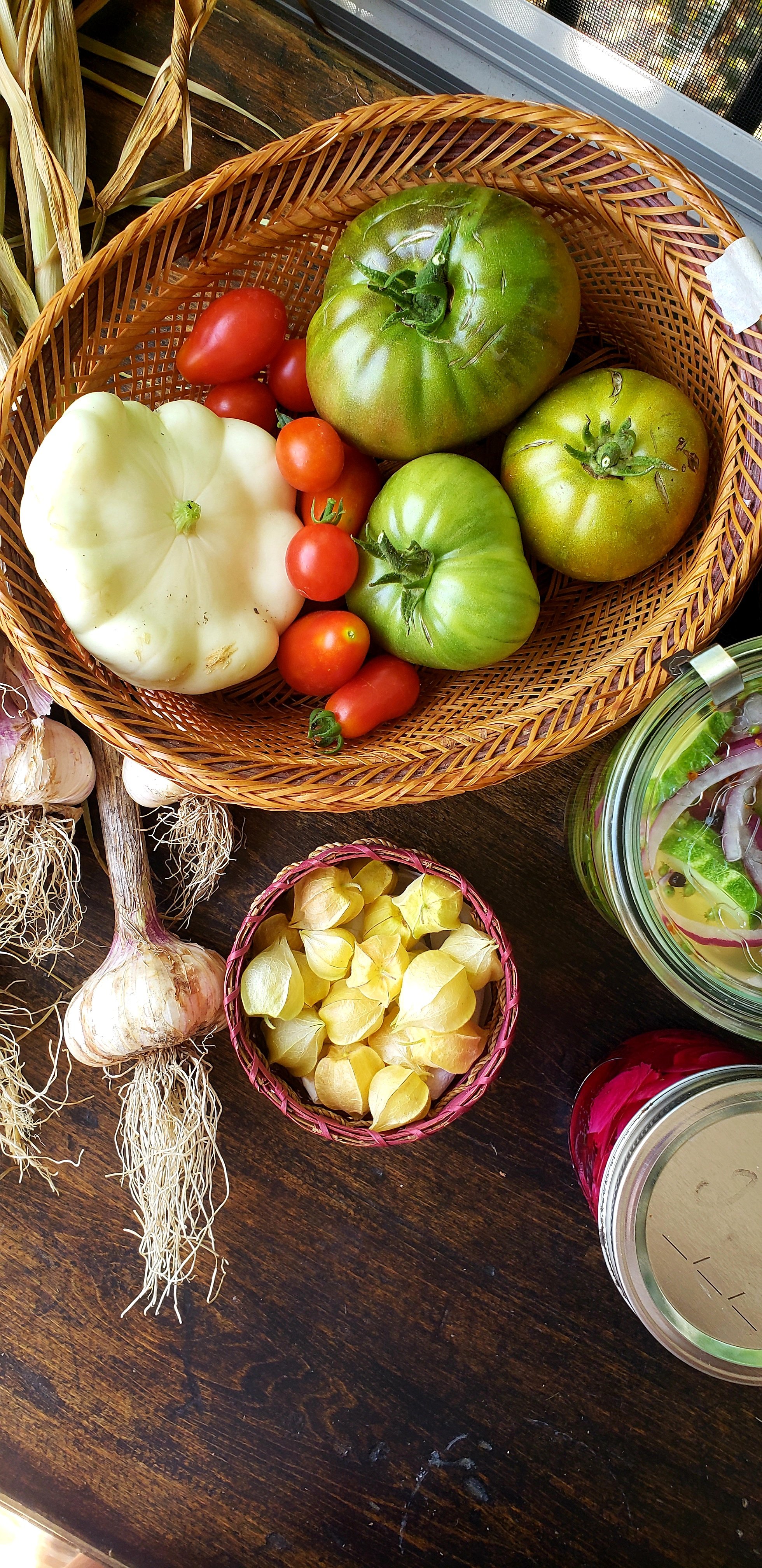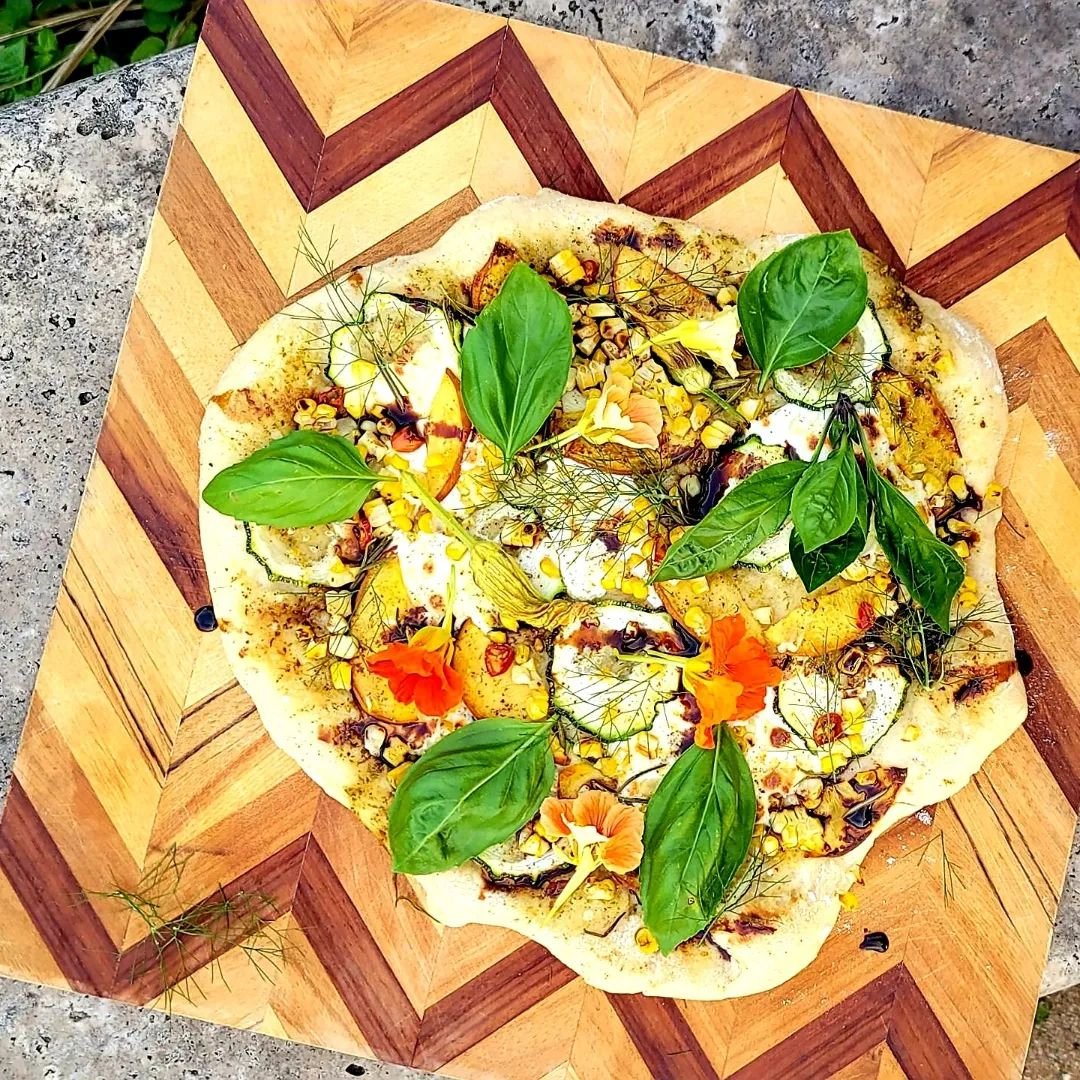Here are a few tidbits about my experiences thus far:
- The food tastes so much better. The flavors and quality take me back to my childhood. Playing and working in my grandmother’s garden. Plucking fresh strawberries straight from the vine. Dusting off the dirt and taking a juicy bite. Sweet, succulent and still warm from the sun. Breaking off a stalk of rhubarb and biting into the crunchy stem because my grandmother always got a kick out of the face I would make when the sour juices hit my taste buds. Reuniting with both ingredients in a cobbler that my grandmother made in her cast iron skillet for dessert. Hot with some ice cream melting on top. It’s food with a story, rich in connection and nourishment for the mind, body and spirit.
- My taste buds and my senses are recalibrating. Since I have started sourcing most of my food locally, I am “limited” to what is in season. The available ingredients change slightly from week to week and so what I am eating also changes. For this reason, I am getting more variety in my diet, or as I like to say, contrast. I am learning to savor the flavors while they last. When ingredients have had their time to shine and it is time for them to make way for a new star, I get the opportunity to miss them. Knowing that their season will circle around once again, I have something to look forward to. When we are reunited once again, I will have the pleasure of enjoying them with a deeper sense of appreciation and attention. Take the strawberry I mentioned above. How sad it would be to do that so often that I no longer noticed the warmth or savored the sweetness. The strawberry deserves better and so do I!
A few months ago, I made the decision that I wanted to start sourcing more of my food locally and start grounding more of my diet in foods that are in season. I started with signing up for a CSA and frequenting local shops and markets to restock my refrigerator and pantry. When I made this decision, I had no idea it would have such a profound impact on my life.
It has caused such a major shift in perspective and lifestyle all together. Not only have I become more inspired as a cook but I am feeling more grounded throughout the seasons and in my community. The longer I am on this journey, the fuller, richer and more nourished my life feels.
- I am wasting much less and slowing down a lot more. Because this food is drenched in connection and care - I find myself paying much more attention and giving more reverence to it. One day at work, I took my lunch as usual. This day was not much different except that the leftovers I brought felt extra special. Almost every ingredient was sourced locally. From the vinegar, to the bread I used to make crumbs as a topping for my green beans. The potatoes and the chicken. As I sat to eat my lunch, I habitually reached for my phone. As I went to begin scrolling mindlessly, something stopped me. I thought, “ So much time, energy and care went into producing these ingredients. From the cycles and resources of nature, to the farmer’s that tended and harvested the crop. To the time I spent preparing a meal that tasted delicious and would nourish my body and my family…it deserves better. It deserves my attention. And I deserve to savor this meal. To get all of the pleasure I can from it.” So I took my time, noticing the flavors and textures, enjoying every bite. I was so full at the end… not just of delicious food. But of gratitude. And it changed the trajectory of the rest of my day.
- I feel richer. Both in the sense of what one typically associates with being rich but also richer in connection and community. It is true that I have started saving money by eating locally and seasonally. I believe this is due in part to visiting big supermarkets much less, if at all. There is less to be tempted by, especially when it comes to prepackaged and convenience foods. I am much less likely to buy things that I don’t need. When I go to the local markets, I end up only purchasing things that compliment what I am getting in my CSA box and ingredients that I already have at home. The money that I am spending feels as though it has a lot more purpose now too. It feels good to know that it is supporting these small businesses, farms and their families.
Making the venture out to the local markets has become something that I very much look forward to and this is where I really feel a new wealth of richness in my life. I enjoy visiting the local shops in my community, getting to know the people who work there and building relationships. My home feels even more like home now. I feel as though I have deeper roots and a place within it.
Rachel Powers
Rachel Powers is a Chef, Certified Health and Nutrition Coach, Local Food Advocate and Soon to be Food Blogger. You can reach her at awholesomehelping@gmail.com and find her on instagram at a.wholesome.helping.
Information about CSA’s :
CSA stands for Community Supported Agriculture. It is a great way to participate in farming even if you don’t have the space or ability to farm yourself! By enrolling in a CSA you become a shareholder of the farm, paying money upfront that goes towards produce and provisions throughout the season. I purchased my CSA through The Farm on Central after visiting the farm, getting to meet the family who lives there and seeing their passion for producing healthy food that is good for us and for the planet. Many farms even offer delivery now, which makes it that much more accessible for people. I encourage anyone and everyone to visit at least one farm near them this year! Meet the people behind the food, connect with them and your food in a whole new way. Ask questions, make new friends and maybe even get your hands a little dirty. There is a lot of power in the community and by supporting our local farms, food producers and artisans - we will grow stronger and more resilient. Big supermarkets and grocery stores do not make it easy for small local farmers to sell their produce with them. If they are able to get their products on the shelves, the supermarkets keep the majority of the profit. It’s okay to take baby steps. Maybe you start with just a carton of eggs every week or some local honey or greens. A little is better than nothing at all and the more people we have just doing a little, the better off we will all be. The stronger we will all be. Building our community up one meal, one conversation, one carton of eggs at a time.
Check out the CSA page in the CORV Local Food Guide.













